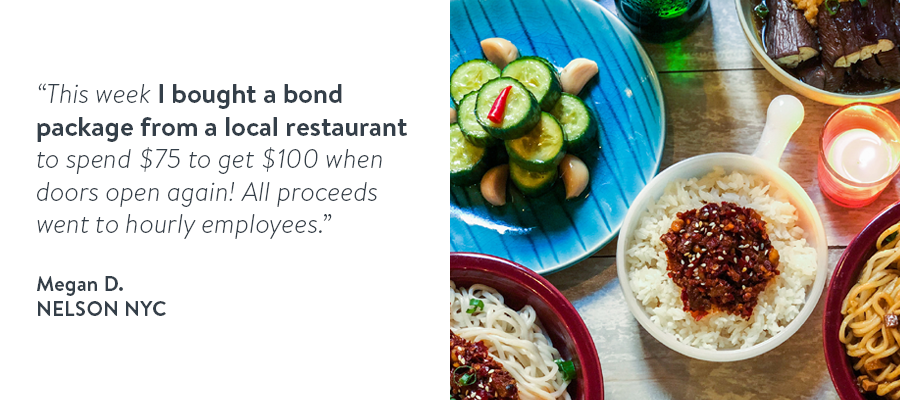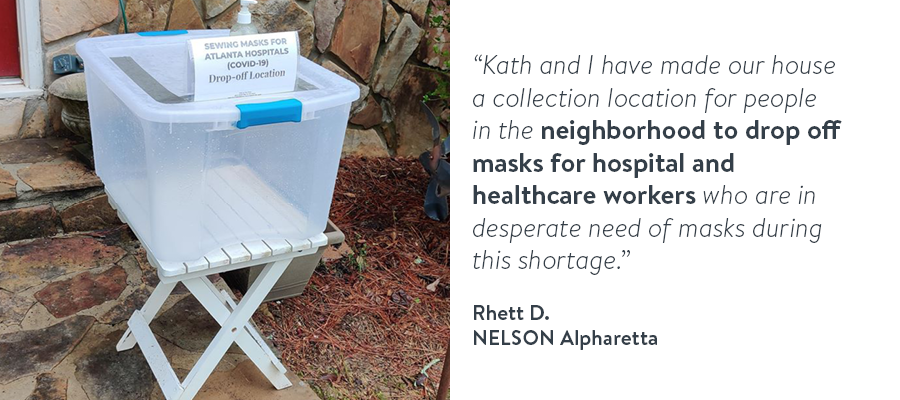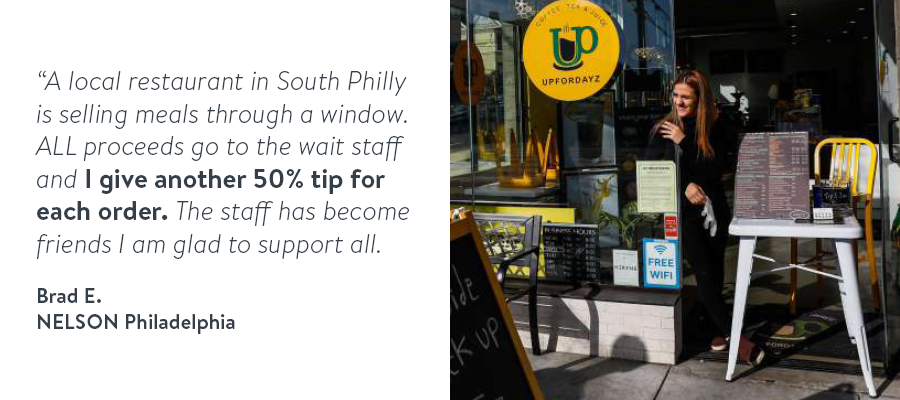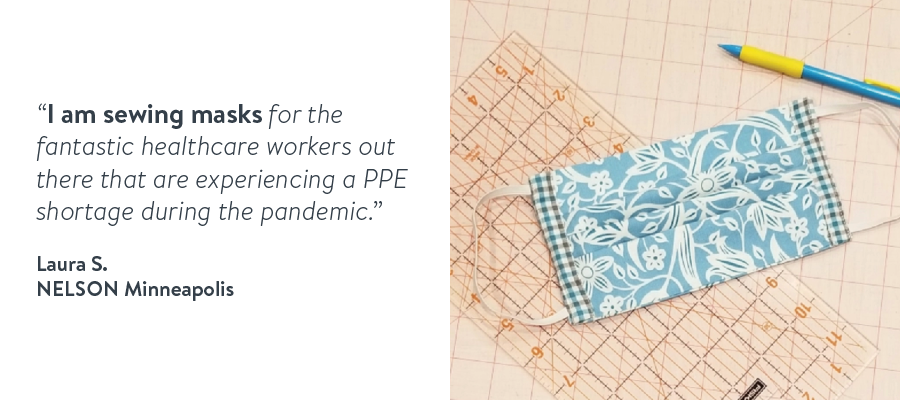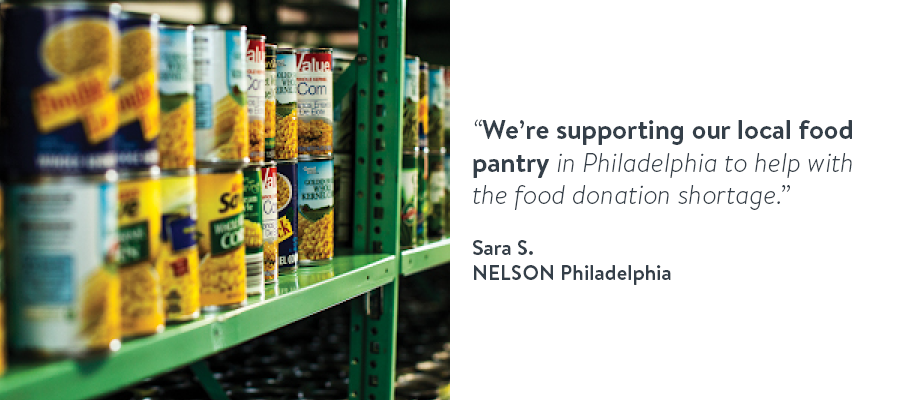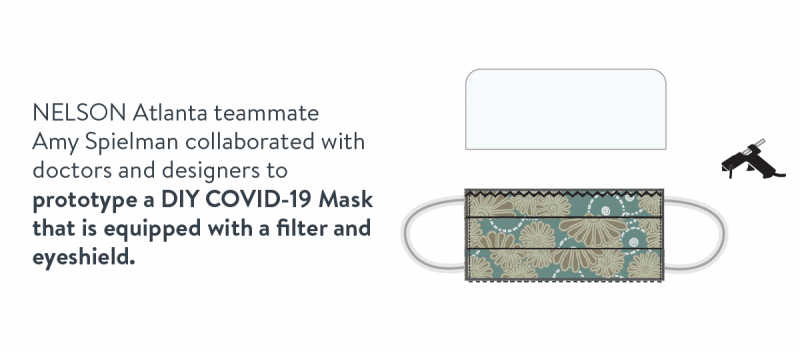The Amenity Effect: Making your Office Building More Marketable
Amenities have a profound effect on the value of a building, and new unique experiences make a lasting impression for consumers, employees, hotel guests, and residents. Our mixed-use teammates set out to explore current and future amenity trends in our latest blog series, The Amenity Effect. Follow along as we dive deep into the environments where we work, shop, live, and thrive and take a closer look at the amenities that help make these environments flourish.
___________________________________________
When I graduated from Oregon and moved to San Francisco to begin my career in architecture, it was at the peak of the dotcom era. Every other person I met was working for a startup of some sort with stories of ping pong tables, open refrigerators, drink carts, and skateboards in their offices. The dotcom parties we attended were epic with each startup trying to outdo the next, as the city was breeding a culture of having fun at work. Elementary school kids were trading in the vision of becoming a doctor or lawyer for a job at Google because of the perks that it came with. Corporations took note and began adopting the fun at work mentality, by saturating their office buildings, headquarters, and corporate campuses with amenities.
When it comes to workplace amenities, there isn’t just one magic formula. Developers and landlords can get creative with the route they want to take, but what matters most, is incorporating brand-centric amenities that complement the surrounding community and overall purpose of the building.
Here are three examples of different approaches to building amenities and their effect on the value of the facility:
1. Multi-tenant building with a central amenity hub
Some savvy developers have seen opportunities to acquire multi-building commercial office parks with little to nothing in common and transform them into campuses like those corporate and tech headquarters. They recognized the trend for hospitality inspired environments in universities that are nurturing our future workforce and the need to provide comparable environments in the real world. Sure each building could be outfitted with its own checklist of amenities, but these developers are aspiring to bring the multi-tenant buildings together with a centralized amenity hub.
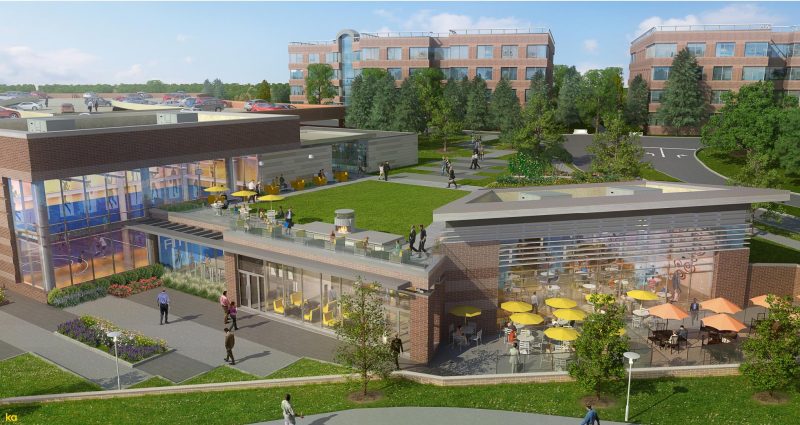
Warren Corporate Center – Warren, NJ
Warren Corporate Center in Warren, New Jersey is an example of a suburban multi-building, mixed tenant property that we helped reposition as a unique amenity-rich campus with dining, fitness, sports, conferencing, and workplace wellness offerings. NELSON capitalized on a central location for the amenity building, creating strong indoor-outdoor connections through transparency. The push and pull of building forms encourages visitors to wander into the building and explore the green roof plaza and views inside and out. A variety of gathering spaces offer visitors a new level of hospitality and reasons to stay longer for group meetings, individual work sessions, or corporate functions. The design elevated the quality of architecture and amenity space with the objective of attracting better tenants and encouraging current tenants to engage with a campus community.
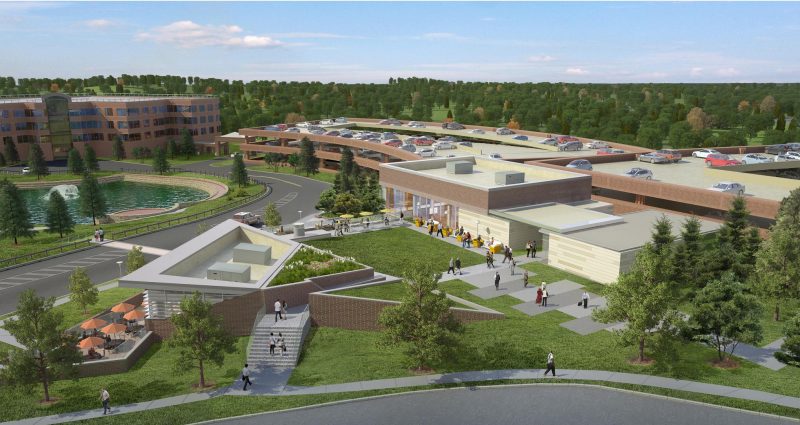
Warren Corporate Center – Warren, NJ
2. Social hub for wellness, collaboration, and after-hours activity
There are also opportunities to expand upon the more traditional fitness, conferencing, and dining amenities by positioning a facility as a social hub for wellness, collaboration, after work happy hours, and sports leagues.
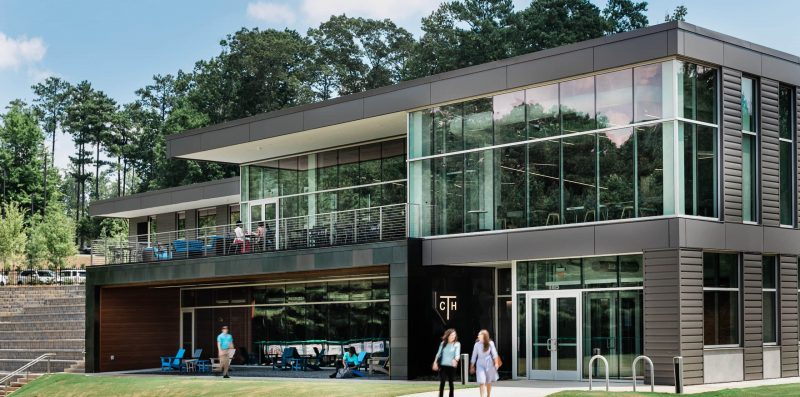
Sanctuary Park – Alpharetta , Georgia
Our approach in Alpharetta, Georgia was to position a new two-story building into the existing hillside to take advantage of the topography and maximize views to the natural surroundings and very active softball field. A terraced amphitheater provides both space for softball spectators, as well as causal seating and open-air meetings. Dining, lounging, and recreation spaces were arranged along a grand outdoor terrace that overlooked the ballfield, with all-glass walls to reinforce indoor-outdoor connections and provide natural light and stunning views throughout. A well-equipped fitness center is tucked into the lower level which features a high-end cardio and weight gym, classrooms, and spa-like locker and shower facilities to fulfill the cornucopia of centralized campus amenities.
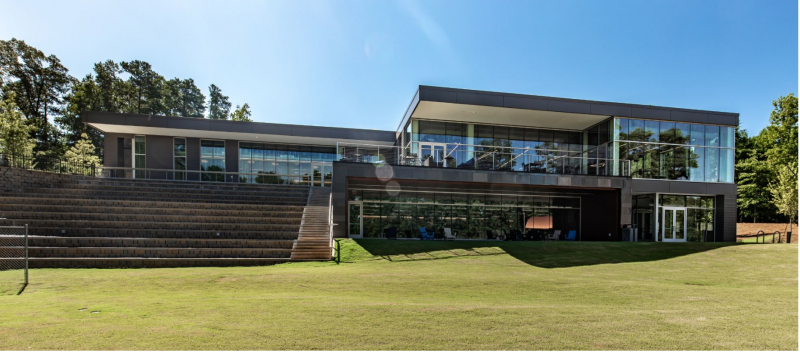
Sanctuary Park – Alpharetta , Georgia
3. Storied destination with outdoor and local flare
Storytelling can be a huge influence for leasing and attracting a tenant who seeks to provide an authentic environment for their employees. Adding outdoor elements and local flare can also add value. As crowded fitness centers, classrooms, and cafes hit pause for a while post-COVID-19, and more people continue to work from home, it will be necessary to provide a safe work environment.More thought and effort should be focused to evolving and merging the physical confines of a structured building with the fresh openness of the outdoors. Trails, walking paths, bike share programs could couple with covered outdoor working opportunities. Perhaps extended stay hospitality will make its way to these amenity buildings in the form of on-campus micro-suites that could provide for safe and convenient overnight stay and work opportunities for traveling employees, consultants and clients. Wherever the amenity game leads us, we as designers, owners and developers can seek to provide a blended biophilic connection of comfort, privacy, flexibility, inspiration, and efficiency in the way we work.
Latitude in Parisspany, New Jersey is an example where proximity of the existing buildings to I-80, helped inspire our branding and design teams to adopt a metaphor of coast-to-coast connectivity and the American landscape in the branding and design of the renovation. The main focal element of the project was the glass-enclosed space that would connect the two separate buildings to create a figurative crossroad for the entire property. A grand stair in the space responds to the site’s topography, reinforces outdoor connections, and provides the defining social gathering space for the campus.
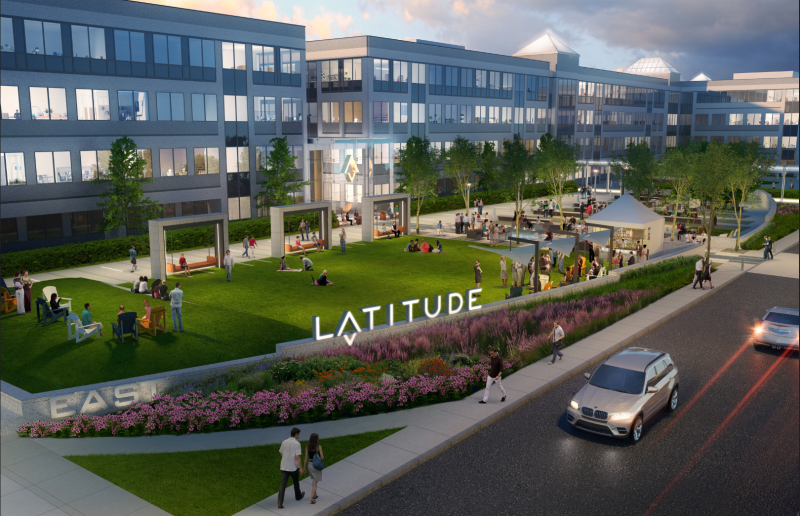
Latitude – Parsippany, New Jersey
The underutilized, long, linear landscaped area along the buildings has been re-imagined as a variety of outdoor amenity spaces that reinforce the coast-to-coast concept with elements that reflect vernacular imagery from across the country and offer options for events, recreation, individual reflection, spontaneous interactions, and collaboration.
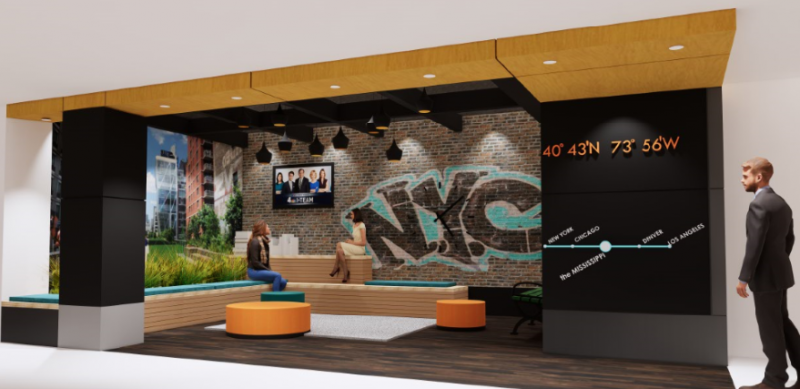
Latitude – Parsippany, New Jersey
The amenity effect for workplaces goes beyond recruiting and retaining employees. Whether a space is meant to connect tenants and inhabitants, inspire wellness and socialization, or tell a brand’s story, amenities are the valuable tools that grab attention and keep people coming back and engaged while they’re there.
The Assemblage = Hotel + Co-working
During our recent trip to New York for the BDNY and HX conferences, our team decided to try out the latest trend in industry blending … a co-working space that offers hotel accommodations. The Assemblage which opened its first location in New York’s upscale NoMad neighborhood in March of 2018, with a second location in the Financial District in April, provides its members with custom-designed flexible and dedication co-working spaces to support not only creativity, but well-being.
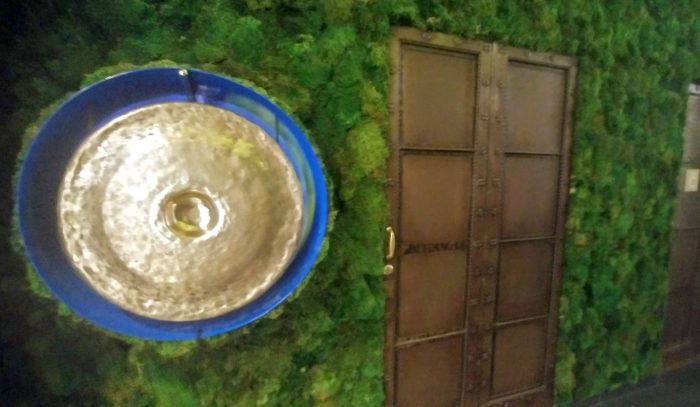
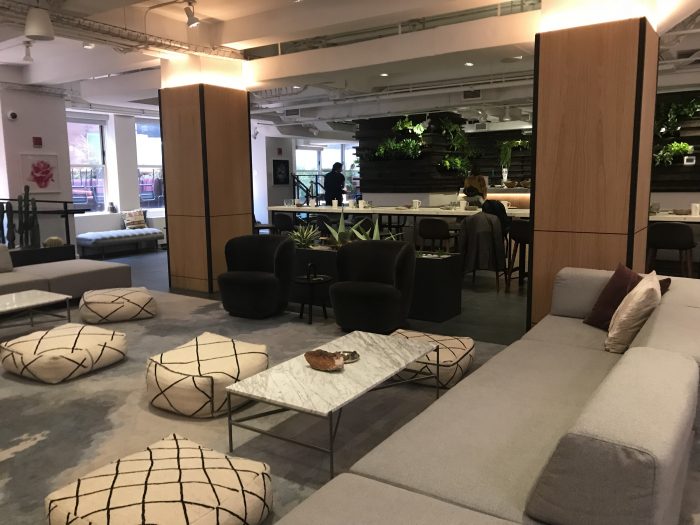
Memberships at the co-working space start at $200 for individuals (approximately a night’s stay in a room) and run up to $6,500 for companies that want to rent the space. What differentiates The Assemblage is their focus on what they call a “higher mind”. They provide their members with not only flexible space to work, but programming with a focus on wellness including yoga, meditation, sound breath work classes, tea ceremonies and more. This theme permeates not only the hotel rooms but their food and beverage offering. The Plant Cafe follows the Ayurvedic diet, offering primarily whole or minimally processed foods and practice mindful eating rituals. And be forewarned guests will not find any alcohol in John Street’s Nymphaea Elixir Bar. The apartment style rooms are larger than the traditional NYC average and feature kitchenettes, ample seating, and plenty of “higher mind” decor … including live plants, crystals and feathers.
But even if you’re not a spiritual person, The Assemblage is definitely worth a visit. The unique artwork (take the stairs to see even more), attention to detail, and eclectic design are reason enough to book a room at this innovative space. Just make sure to BYOB for your next visit.
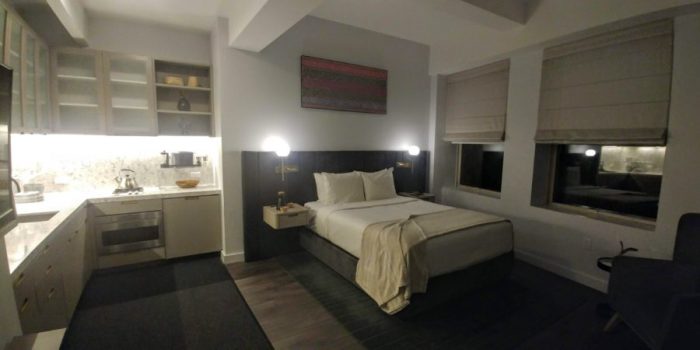
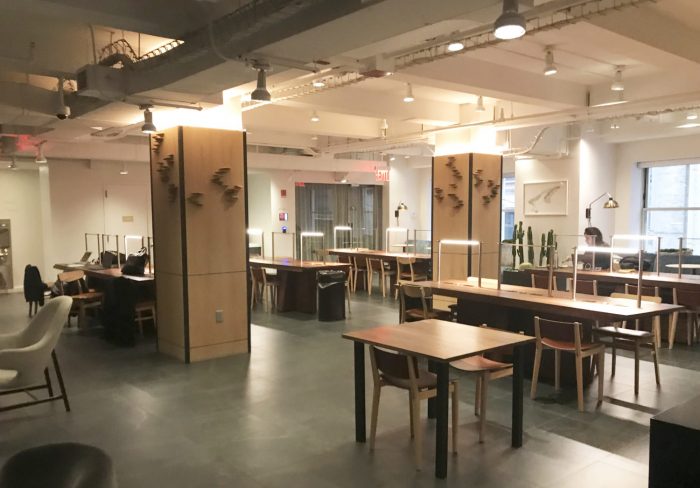
Horseshoe Casino Cleveland
Architecture Spotlight: Jim Harkin
At NELSON, we believe architecture has the power to create a transformative sense of place, supporting communities and strengthening the fabric of cities across the nation and around the world. Recently named the #2 fastest growing architecture firm, we’re celebrating our growth, people, and projects that are boldly transforming architecture. To do so, we’ve created our latest series, “Architecture Spotlight” to introduce you to a few thought leaders within the NELSON Architecture Team. You’ll not only get an exclusive look at our people, but hear what’s in store for the future.
This week we interview Jim Harkin, AIA, NCARB, SVP Principal at NELSON. Keep reading to learn more about his career, point-of-view, and what he think is next for the industry.
Q: What is your role at NELSON and how long have you been an architect?
A: I am the National Practice leader for Mixed-Use Co-lead of the Architecture Discipline and member of the NELSON Management Team. I have been an architect for 32 years.
Q: What is your favorite architecture trend of today?
A: The trend of “discovery” is my favorite. I don’t believe that we are in an era or style of Architecture, as in the past. We are in a time of technology, evolution, and pushing the limits of our current construction technology, all while discovering new ways.
Q: What advice would you give a young architect?
A: Be well-rounded, be uncomfortable, be humble, and follow through with any and all opportunities presented to you.
Q: What do you think the future holds for architecture?
A: I think the future is bright, but we must redefine Architecture as a profession. We are clinging to old ideals and need to catch up to the tools, ideas, and world that are available to us.
Q: What is the biggest challenge the architecture industry faces today?
A: Finding people. Period. There are many choices for “cousin” professions that more and more young creatives are pursuing. Schools need to change and our profession needs to change to attract new young architects.
Q: What sets NELSON apart from other architecture firms?
A: Diversity, size, geographic locations, type of disciplines and practices. There are so many avenues you can pursue at NELSON. A professional can pave their own path.
Healthcare Facilities Today: Avoiding HAIs in Healthcare Design
Check out the latest article from Healthcare Facilities Today, featuring insights from Healthcare Director and Senior Design Leader, Cheryl Lauren Spigler. The piece explores how the principle of “Do No Harm,” central to the Hippocratic Oath, extends beyond physicians to everyone involved in a healthcare facility— including designers and construction teams. Learn how design and construction practices can uphold the commitment to patient safety and care, treating every individual as a member of the family. Don’t miss this thoughtful discussion on the critical role of healthcare design in safeguarding patient well-being.
Read more here.
Patterson Companies
EuroShop 2017: London’s Artful Store Environments
Foreword: Every 3 years, 100,000+ visitors flock to an international destination to experience all things retail. Hailed as the “Global Retail Trade Fair,” EuroShop covers all things retail related, from store design to visual merchandising. Located in Dusseldorf, Germany, the event offers 17 exhibition halls within 19 different buildings. A group of lucky FRCH-ers made the trip this year and will be sharing global trends and inspiration from the conference and nearby travel all week!
These eye catching London retail spaces are not just store environments, but art forms that intrigue. Rather than quiet, neutral backdrops for the product, these spaces take the opposite approach; they successfully surprise and delight with bold materiality and captivating displays. The result is a memorable store environment that is exciting to visit and, in turn, generates customers who become loyal brand advocates.
Liberty infuses personality into each touchpoint of the shopping experience. The flooring, a mix of stained wood and colorful marble planks dance around the space. Velvet tabletops and bold wallcoverings add a tactile element and a touch of drama, complementing the beautiful products on display.
Dover Street Market is known for their “ongoing atmosphere of beautiful chaos”. Wild and unexpected, the unconventional environment intrigues the customer at every turn. Shunning traditional fixture displays, the products are integrated into art installations that piques the curiosity of the shopper.
Selfridges recently opened a IoT Zone in the basement of the building which features the latest gadgets in an interactive environment, with an upside-down car as the focal display. The new Accessories Department in Selfridges attracts shoppers with it’s soft color palette, beautiful lighting and in-house bar, located at the center of the space.
Architecture Spotlight: Mark Levine
At NELSON, we believe architecture has the power to create a transformative sense of place, supporting communities and strengthening the fabric of cities across the nation and around the world. Recently named the #2 fastest growing architecture firm, we’re celebrating our growth, people, and projects that are boldly transforming architecture. To do so, we’ve created our latest series, “Architecture Spotlight” to introduce you to a few thought leaders within the NELSON Architecture Team. You’ll not only get an exclusive look at our people but hear what’s in store for the future.
This week we interview Mark Levine, AIA, Managing VP of NELSON Los Angeles. Keep reading to learn more about his career, point-of-view, and what he think is next for the architecture industry.
Q: What is your role at NELSON and how long have you been an architect?
A: At NELSON, I am the Managing Vice President working out of our Los Angeles office. Currently, I am leading design teams through master planning, retail prototype development, domestic and international retail programs, and various retail mixed-use and commercial projects in the Western Region. I’ve been a practicing designer/architect for 24 years and hold memberships in ICSC and ULI.
Q: What is your favorite architecture trend of today?
A: I enjoy today’s trends in visualization. Our profession is predicated on communicating the built environment. What got me into architecture at a young age was the art of architectural drawings, renderings, construction drawings, sections, axons, etc. Each year, visualization advances even more with VR, AR, and 3-D modeling. I’m excited by the possibility of infusing tools with the same sense of artistry as a hand sketch.
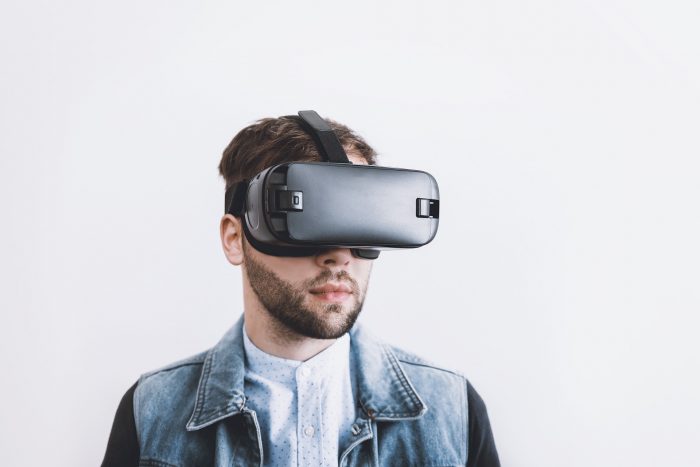
Q: What advice would you give a young architect?
A: My advice for any young, aspiring architect is to always work on expanding the boundary of your interests. Just because you are an architect doesn’t me those passions can’t be paired with another. Taking things even further, I advise any young professional to simply read something out of their element. For example, if technology is your thing take a break to read an article about literature or commerce occasionally. It’s the connections we make with seemingly unassociated ideas that can have a tremendous and impact spark a new sense of creativity.
Q: What do you think the future holds for architecture?
A: Architecture is one of the oldest professions. The tools, methods, aesthetics, and styles have gradually changed with time, but our aspirations are rooted in the fundamentals of humanity. Architecture will continue to evolve in the future as an ever-changing practice. With that in mind, architects should always be aware of these aspirations and reflect these in the design and execution of our work.
Q: What is the biggest challenge the architecture industry faces today?
A: The biggest challenge for architecture is understanding, responding and reflecting within changing industries. Today humans fluidly interact with environments, meaning that one space is expected to do many things. For example, malls/retail centers are longer just a place to shop. These types of experiences have shifted to retail mixed-use environments that blur the lines of retail, hospitality, and entertainment. Today’s consumers think less in channels turning toward environments that solve a need or cater to desires.
Q: What sets NELSON apart from other architecture firms?
A: I think it’s the immense effort undertaken by the entirety of the firm to improve and become better is what makes this company so special. At NELSON, we are constantly changing, evolving, and growing. This has proven that the company is always up for a challenge that will make us stronger.
Connecting with our Communities
How to lend a hand while staying home
Are you feeling overwhelmed during this time of uncertainty? Are you wondering how you can give back while remaining socially distant? Here are five ways you can help from home during COVID-19:
- Donate blood – The American Red Cross and other agencies are in critical need of healthy blood donors. Visit their website to learn more about donating blood safely during COVID-19 and to make an appointment near you.
- Give to a local food bank – Find your local food bank on Feeding America’s website to learn how you can give back. Although some food banks are limiting in-person volunteers to keep others safe, most are accepting online donations.
- Support small businesses – Many local restaurants and businesses are being affected by stay at home policies around the world. Take time to purchase gift cards, shop online, leave positive reviews, and engage with their social media channels. Find your favorite business on Help Main Street to show your support.
- Volunteer – In today’s digitally connected society, there are many non-profits and organizations seeking help without having to be in-person. Alone connects the elderly with volunteers across the country through technology. You can sign up to be a telephone volunteer to check on older adults during COVID-19.
- Stay home – The easiest way to help is to follow your state’s orders to practice social distancing. Only leave the house for essential work or grocery runs and be extremely cautious if you must go out. Learn more helpful tips about staying home here.
Leading by example: What we’re doing to support our communities
NELSON Worldwide teammates from across the country are doing their part to make a difference. From donating blood, to sewing protective masks, we are making a positive impact in our communities and encourage everyone to do the same.
